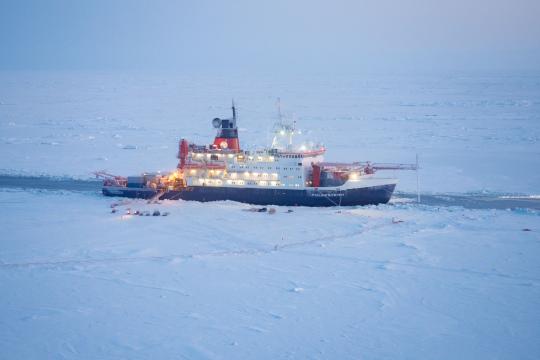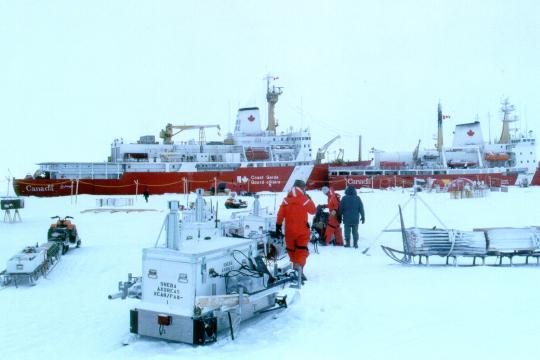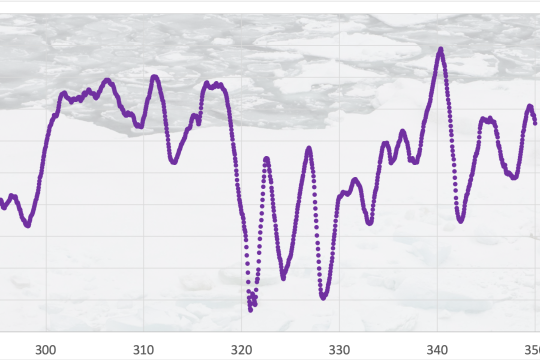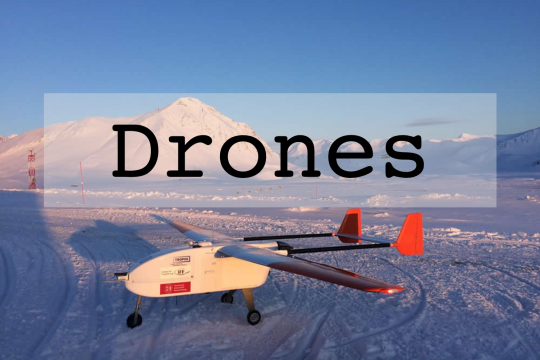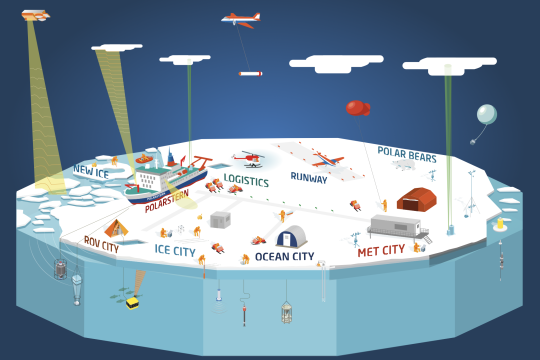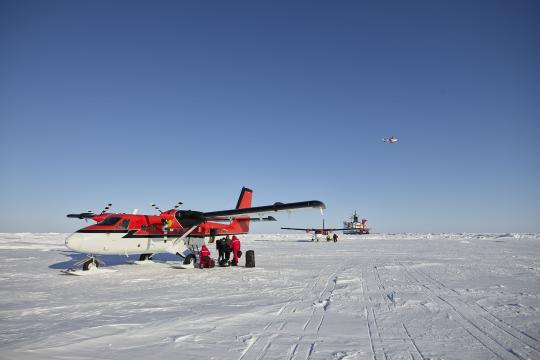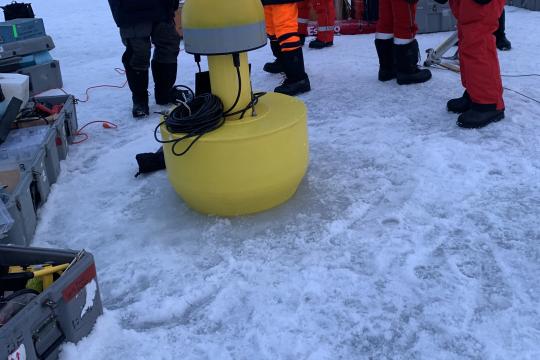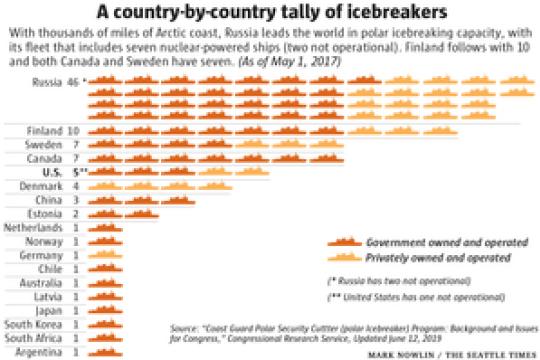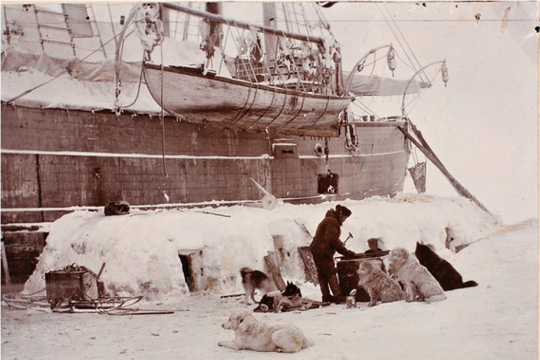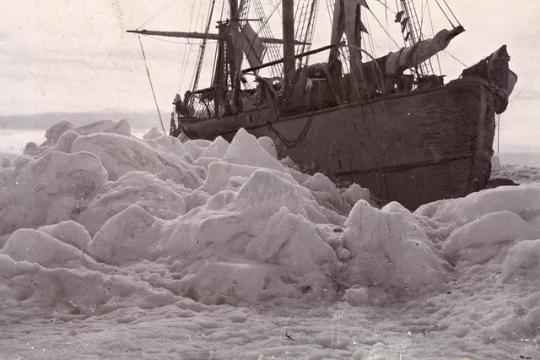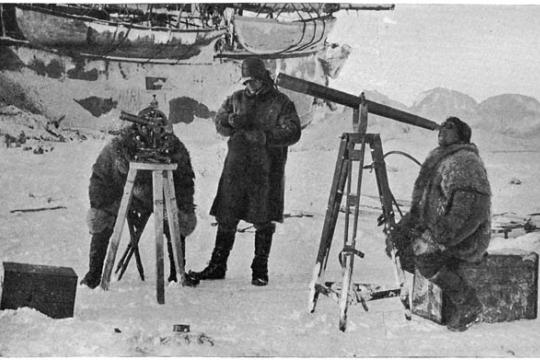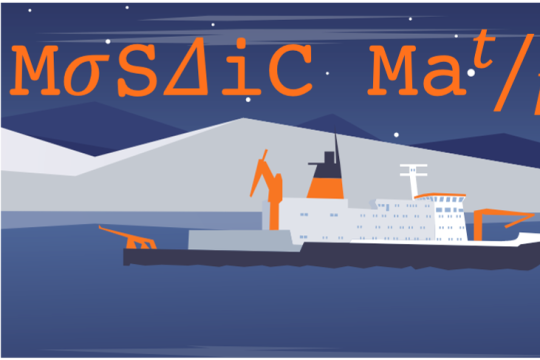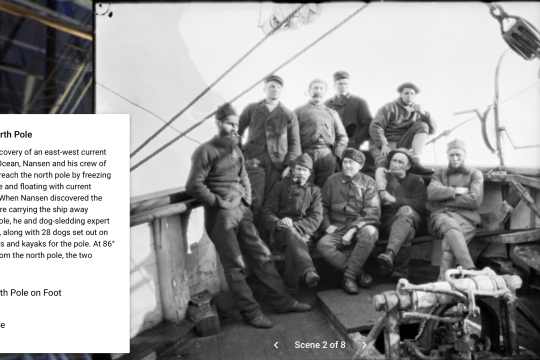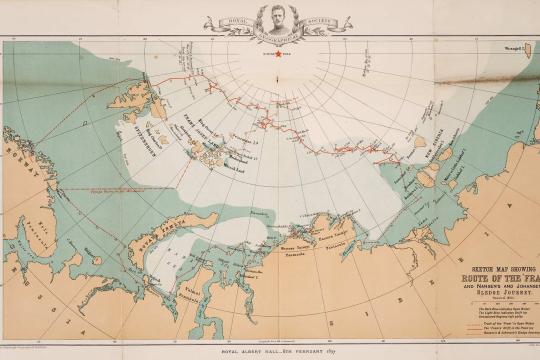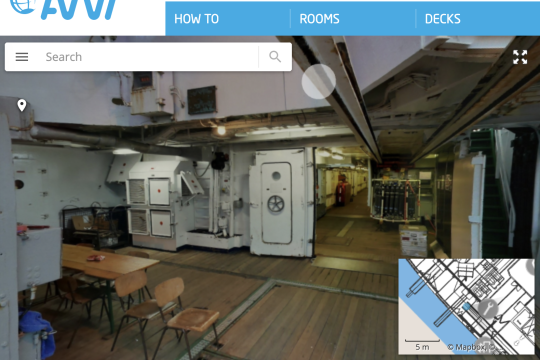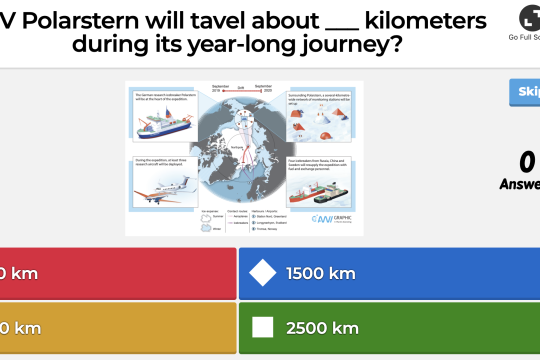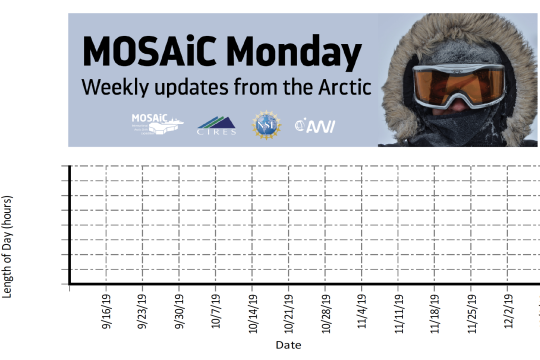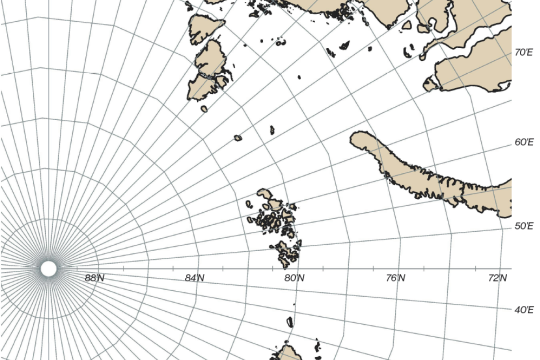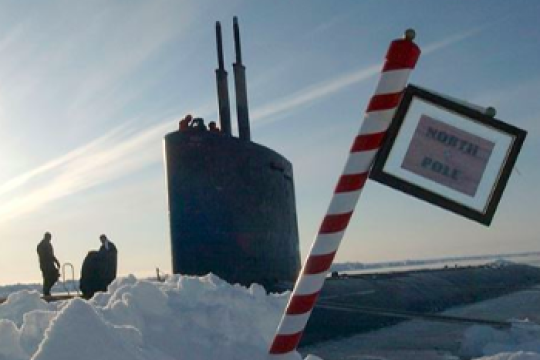Expeditions
New Ice, New Problems
The sea ice in the Arctic is becoming newer and thinner. What kinds of impacts could this have on the Arctic region? Photo credit: Jan Rohde/AWI
Lesson plan
Subject: Expeditions, mosaic monday, Obtaining and evaluating information, Oceans and ocean circulation, Sea ice
Grade Level: Middle School, High School, University/college
Developer: CIRES
The sea ice in the Arctic is becoming newer and thinner. What kinds of impacts could this have on the Arctic region? Photo credit: Jan Rohde/AWI
Lesson plan
Subject: Expeditions, mosaic monday, Obtaining and evaluating information, Oceans and ocean circulation, Sea ice
Grade Level: Middle School, High School, University/college
Developer: CIRES
Quick Bite: Correlation, Causation, and Clouds
In this Quick Bite activity, students will examine actual data from the SHEBA Arctic research expedition to see if there is a correlation between surface temperature in the Arctic and cloud cover. Photo credit: Don Perovich
Project of Mosaic Quick bite
Subject: Analyzing and interpreting data, Atmosphere, Expeditions, mosaic monday
Grade Level: Middle School, High School
Developer: CIRES
In this Quick Bite activity, students will examine actual data from the SHEBA Arctic research expedition to see if there is a correlation between surface temperature in the Arctic and cloud cover. Photo credit: Don Perovich
Project of Mosaic Quick bite
Subject: Analyzing and interpreting data, Atmosphere, Expeditions, mosaic monday
Grade Level: Middle School, High School
Developer: CIRES
Quick Bite: Weathering the Storms
Scientists on the 2019-2020 MOSAiC expedition were interested in collecting air pressure data, as air pressure can give you an indication of weather changes. Can you identify changes in weather from actual air pressure data from the MOSAiC expedition?
Project of Mosaic Quick bite
Subject: Analyzing and interpreting data, Atmosphere, Expeditions, mosaic monday
Grade Level: Middle School, High School
Developer: CIRES
Scientists on the 2019-2020 MOSAiC expedition were interested in collecting air pressure data, as air pressure can give you an indication of weather changes. Can you identify changes in weather from actual air pressure data from the MOSAiC expedition?
Project of Mosaic Quick bite
Subject: Analyzing and interpreting data, Atmosphere, Expeditions, mosaic monday
Grade Level: Middle School, High School
Developer: CIRES
Quick Bite: How did MOSAiC scientists study the Arctic atmosphere?
Learn about the various instruments scientists used to study the atmosphere during the 2019-2020 MOSAiC expedition in this Quick Bite activity.
Project of Mosaic Quick bite
Subject: Atmosphere, Earth science, Engineering and technology, Expeditions, mosaic monday, Physical science
Grade Level: Middle School, High School
Developer: CIRES
Learn about the various instruments scientists used to study the atmosphere during the 2019-2020 MOSAiC expedition in this Quick Bite activity.
Project of Mosaic Quick bite
Subject: Atmosphere, Earth science, Engineering and technology, Expeditions, mosaic monday, Physical science
Grade Level: Middle School, High School
Developer: CIRES
Quick Bite: Climate is a System
In this Quick Bite activity, your students will explore how Earth's systems are interconnected by becoming members of the 2019-2020 MOSAiC expedition science teams.
Project of Mosaic Quick bite
Subject: Climate, Earth science, Expeditions, mosaic monday
Grade Level: Middle School, High School
Developer: CIRES
In this Quick Bite activity, your students will explore how Earth's systems are interconnected by becoming members of the 2019-2020 MOSAiC expedition science teams.
Project of Mosaic Quick bite
Subject: Climate, Earth science, Expeditions, mosaic monday
Grade Level: Middle School, High School
Developer: CIRES
Quick Bite: On (Thick or) Thin Ice
How thick does sea ice need to be to support an airplane landing? It turns out we can use a simple equation to calculate the answer. Photo credit: Michael Gutsche/AWI
Project of Mosaic Quick bite
Subject: Computational thinking, Expeditions, mosaic monday, Sea ice
Grade Level: Middle School, High School
Developer: CIRES
How thick does sea ice need to be to support an airplane landing? It turns out we can use a simple equation to calculate the answer. Photo credit: Michael Gutsche/AWI
Project of Mosaic Quick bite
Subject: Computational thinking, Expeditions, mosaic monday, Sea ice
Grade Level: Middle School, High School
Developer: CIRES
Quick Bite: Buoy Structure and Function
In this Quick Bite activity, your students will read about SIMB buoys, watch a video of a buoy installation during the 2019-2020 MOSAiC expedition, and then discuss the structure and function of a buoy. Photo credit: Anne Gold, CIRES/CU Boulder
Project of Mosaic Quick bite
Subject: Constructing explanations, Engineering and technology, Expeditions, mosaic monday, Oceans and ocean circulation
Grade Level: Middle School, High School, University/college
Developer: CIRES
In this Quick Bite activity, your students will read about SIMB buoys, watch a video of a buoy installation during the 2019-2020 MOSAiC expedition, and then discuss the structure and function of a buoy. Photo credit: Anne Gold, CIRES/CU Boulder
Project of Mosaic Quick bite
Subject: Constructing explanations, Engineering and technology, Expeditions, mosaic monday, Oceans and ocean circulation
Grade Level: Middle School, High School, University/college
Developer: CIRES
Quick Bite: Icebreakers of the World
Which countries in the world have icebreakers, and why? Explore these questions and more in this Quick Bite activity.
Quick bite
Subject: Engineering and technology, Expeditions, Geopolitics, mosaic monday
Grade Level: Middle School, High School
Developer: CIRES
Which countries in the world have icebreakers, and why? Explore these questions and more in this Quick Bite activity.
Quick bite
Subject: Engineering and technology, Expeditions, Geopolitics, mosaic monday
Grade Level: Middle School, High School
Developer: CIRES
The Fram Expedition: Exploring the Unknown Polar Regions
Learn more about what was known and not known about the Arctic during the time of the 1893-1896 Fram expedition and what kinds of scientific observations they made during their three years locked in the ice. Check out the optional activity at the end of the reading where your students can compare the science goals of the 1893 Fram and 2019-2020 MOSAiC Arctic expeditions.
Project of Mosaic Quick bite
Subject: ELA, Expeditions, mosaic monday
Grade Level: Middle School, High School
Developer: CIRES
Learn more about what was known and not known about the Arctic during the time of the 1893-1896 Fram expedition and what kinds of scientific observations they made during their three years locked in the ice. Check out the optional activity at the end of the reading where your students can compare the science goals of the 1893 Fram and 2019-2020 MOSAiC Arctic expeditions.
Project of Mosaic Quick bite
Subject: ELA, Expeditions, mosaic monday
Grade Level: Middle School, High School
Developer: CIRES
I Notice, I Wonder: Polarstern vs. Fram
In this MOSAiC Quick Bite activity, compare the rooms inside the Fram ship from the 1893 expedition to the Arctic with the modern Polarstern.
Project of Mosaic Quick bite
Subject: Expeditions, mosaic monday
Grade Level: 3-5, Middle School, High School
Developer: CIRES
In this MOSAiC Quick Bite activity, compare the rooms inside the Fram ship from the 1893 expedition to the Arctic with the modern Polarstern.
Project of Mosaic Quick bite
Subject: Expeditions, mosaic monday
Grade Level: 3-5, Middle School, High School
Developer: CIRES
Comparing the 1893 Fram and 2019 MOSAiC Expeditions
Compare the 1893 Fram and 2019 MOSAiC expeditions by reading and comparing firsthand accounts of each.
Project of Mosaic Quick bite
Subject: ELA, Expeditions, mosaic monday
Grade Level: Middle School, High School
Developer: CIRES
Compare the 1893 Fram and 2019 MOSAiC expeditions by reading and comparing firsthand accounts of each.
Project of Mosaic Quick bite
Subject: ELA, Expeditions, mosaic monday
Grade Level: Middle School, High School
Developer: CIRES
MOSAiC Math
Can you solve these MOSAiC expedition math problems?
Project of Mosaic Quick bite
Subject: Computational thinking, Expeditions, mosaic monday
Grade Level: Middle School, High School, University/college
Developer: CIRES
Can you solve these MOSAiC expedition math problems?
Project of Mosaic Quick bite
Subject: Computational thinking, Expeditions, mosaic monday
Grade Level: Middle School, High School, University/college
Developer: CIRES
Explore the Arctic virtually Aboard the Fram
Project of Mosaic Lesson plan
Subject: Engineering and technology, Expeditions, Geography, mosaic monday
Grade Level: Middle School, High School, University/college
Developer: CIRES
Project of Mosaic Lesson plan
Subject: Engineering and technology, Expeditions, Geography, mosaic monday
Grade Level: Middle School, High School, University/college
Developer: CIRES
Timing an Arctic Expedition
The MOSAiC (Multidisciplinary Drifting Observatory for the Study of Arctic Climate) expedition officially launched on September 20, 2019 when the icebreaker Polarstern set sail from Tromsø, Norway. The Polarstern will be looking for an ice floe that it can freeze into and drift along with across the Arctic for a year. The ice must be thick enough throughout the year to support the scientists and instruments that will be on it, but close to thinner ice that is easy to drill through. Why did the MOSAiC expedition begin in September? It turns out this isn't random, but a strategically chosen departure date. Challenge your students to use the National Snow and Ice Data Center's Charctic Interactive Sea Ice Graph to come up with an answer to this question. Then, read more about this question here. Photo: M. Van Woert, NOAA
Project of Mosaic Quick bite
Subject: Constructing explanations, Earth science, Expeditions, mosaic monday, Oceans and ocean circulation, Sea ice
Grade Level: Middle School, High School, University/college, Adult
Developer: CIRES
The MOSAiC (Multidisciplinary Drifting Observatory for the Study of Arctic Climate) expedition officially launched on September 20, 2019 when the icebreaker Polarstern set sail from Tromsø, Norway. The Polarstern will be looking for an ice floe that it can freeze into and drift along with across the Arctic for a year. The ice must be thick enough throughout the year to support the scientists and instruments that will be on it, but close to thinner ice that is easy to drill through. Why did the MOSAiC expedition begin in September? It turns out this isn't random, but a strategically chosen departure date. Challenge your students to use the National Snow and Ice Data Center's Charctic Interactive Sea Ice Graph to come up with an answer to this question. Then, read more about this question here. Photo: M. Van Woert, NOAA
Project of Mosaic Quick bite
Subject: Constructing explanations, Earth science, Expeditions, mosaic monday, Oceans and ocean circulation, Sea ice
Grade Level: Middle School, High School, University/college, Adult
Developer: CIRES
Route of the Fram Expedition (1893-1896)
On July 5th, 1893, the Fram set sail from Tromsø, Norway to try to reach the highest latitude ever attained. Fridtjof Nansen, leader of the Fram expedition, attempted to freeze a custom-built wooden ship in sea ice and use Arctic currents to drift north. See where the Fram--and Nansen--drifted and dogsledded during their three years in the Arctic.
Project of Mosaic Data visualization
Subject: Expeditions, Geography, Oceans and ocean circulation
Grade Level: K-2, 3-5, Middle School, High School, University/college
On July 5th, 1893, the Fram set sail from Tromsø, Norway to try to reach the highest latitude ever attained. Fridtjof Nansen, leader of the Fram expedition, attempted to freeze a custom-built wooden ship in sea ice and use Arctic currents to drift north. See where the Fram--and Nansen--drifted and dogsledded during their three years in the Arctic.
Project of Mosaic Data visualization
Subject: Expeditions, Geography, Oceans and ocean circulation
Grade Level: K-2, 3-5, Middle School, High School, University/college
Tour the Polarstern
Did you know the Polarstern is equipped with an indoor swimming pool? Hop aboard the Polarstern for this all-access, 3D virtual tour!
Project of Mosaic Quick bite
Subject: Engineering and technology, Expeditions
Grade Level: 3-5, Middle School, High School
Developer: CIRES
Did you know the Polarstern is equipped with an indoor swimming pool? Hop aboard the Polarstern for this all-access, 3D virtual tour!
Project of Mosaic Quick bite
Subject: Engineering and technology, Expeditions
Grade Level: 3-5, Middle School, High School
Developer: CIRES
MOSAiC in Numbers Trivia
What temperatures will the MOSAiC researchers endure during the expedition? How far with the Polarstern drift during its 13 month journey? Introduce your students to the MOSAiC expedition and count down to the expedition launch with this MOSAiC in Numbers trivia quiz.
Project of Mosaic Game
Subject: Expeditions
Grade Level: K-2, 3-5, Middle School, High School
Developer: CIRES
What temperatures will the MOSAiC researchers endure during the expedition? How far with the Polarstern drift during its 13 month journey? Introduce your students to the MOSAiC expedition and count down to the expedition launch with this MOSAiC in Numbers trivia quiz.
Project of Mosaic Game
Subject: Expeditions
Grade Level: K-2, 3-5, Middle School, High School
Developer: CIRES
MOSAiC Data Logbook
Your students can be MOSAiC scientists by analyzing real-time data from the expedition each week. Download the MOSAiC Data Log Book and look for the data in each MOSAiC Monday newsletter throughout the expedition. Over time, your students will be able to use the data they've graphed to make interpretations about seasonality in the Arctic and Arctic weather conditions. *Note: We expect data to fall within the following ranges: Length of Day: 0 to 24 hours Temperature: -40 to 14 °C Sea Ice Extent: 3 to 15 million km2 Download the MOSAiC Data Log Book
Project of Mosaic Quick bite
Subject: Analyzing and interpreting data, Earth science, Expeditions
Grade Level: K-2, 3-5, Middle School, High School, University/college
Developer: CIRES
Your students can be MOSAiC scientists by analyzing real-time data from the expedition each week. Download the MOSAiC Data Log Book and look for the data in each MOSAiC Monday newsletter throughout the expedition. Over time, your students will be able to use the data they've graphed to make interpretations about seasonality in the Arctic and Arctic weather conditions. *Note: We expect data to fall within the following ranges: Length of Day: 0 to 24 hours Temperature: -40 to 14 °C Sea Ice Extent: 3 to 15 million km2 Download the MOSAiC Data Log Book
Project of Mosaic Quick bite
Subject: Analyzing and interpreting data, Earth science, Expeditions
Grade Level: K-2, 3-5, Middle School, High School, University/college
Developer: CIRES
Tracking the Polarstern
The route that the Polarstern will take across the Central Arctic is not fully known. Since the ship will be frozen in the Arctic sea ice and drifting along with it wherever it goes, we can only make predictions about the path will follow. Each week we will provide you with the latitude and longitude coordinates of the Polarstern so that your students can track its journey across the Arctic in your classroom. Download this map and plot your first set of coordinates!
Project of Mosaic Quick bite
Subject: Expeditions, Geography
Grade Level: K-2, 3-5, Middle School, High School, University/college
Developer: CIRES
The route that the Polarstern will take across the Central Arctic is not fully known. Since the ship will be frozen in the Arctic sea ice and drifting along with it wherever it goes, we can only make predictions about the path will follow. Each week we will provide you with the latitude and longitude coordinates of the Polarstern so that your students can track its journey across the Arctic in your classroom. Download this map and plot your first set of coordinates!
Project of Mosaic Quick bite
Subject: Expeditions, Geography
Grade Level: K-2, 3-5, Middle School, High School, University/college
Developer: CIRES
Cold Cases: Who Won the Race to the North Pole - Cook or Peary?
Students use primary sources to conduct a mock trial to debate whether Cook or Peary was the first explorer to reach the North Pole.
Lesson plan
Subject: Arguing from evidence, ELA, Expeditions, Geography, Obtaining and evaluating information
Grade Level: High School
Developer: Ohio State University
Students use primary sources to conduct a mock trial to debate whether Cook or Peary was the first explorer to reach the North Pole.
Lesson plan
Subject: Arguing from evidence, ELA, Expeditions, Geography, Obtaining and evaluating information
Grade Level: High School
Developer: Ohio State University
